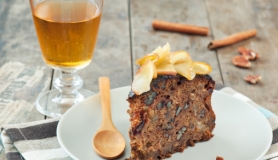Take fat hen, for example, an annual herb, common to wasteland, that contains more iron and protein than spinach and more vitamin B and calcium than cabbage. Certainly one to look out for if you are interested in boosting your family’s nutrient intake. And there are many more species packed with high levels of vitamins and minerals literally growing on our doorstep.
Enjoy every day
Ben Jevis is an herbalist who lives in Wales and gathering wild food is part of his daily routine. “Every morning I go out at sunrise to harvest my greens,” he enthuses. “They taste so good eaten fresh – we juice them and have them in salads. Sometimes I’ll put them in an omelette, using our chicken’s eggs. And as I have gradually grown accustomed to the stronger, somewhat bitter tastes, I find myself eating them straight away as I’m walking.” Ben is sure that his love of wild greens has contributed to his daughter, Alicia’s enthusiasm for these nutrient rich plants. “She’s just three but will happily wolf down a bowl of nettle soup for lunch, or eat wild garlic while out walking with me. I feel really fortunate that she has such an adventurous spirit.”
Go wild for optimum health
In the US, Victoria Boutenko, raw foodist and author is convinced that eating raw wild greens regularly in the form of a green smoothie helped her family to achieve optimum levels of health. She believes that wild edibles are our true superfood and eats a combination of chickweed, nettles, lambsquarters, thistle, plantain, dandelions and purslane every day.
Forage for fungi
As well as wild leaves, there are hundreds of species of edible mushroom growing in the UK. It is important that you equip yourself with a photographic guidebook and/or a knowledgeable expert when planning a fungi forage. Alternatively you could enrol on one of the many courses that are springing up, from day workshops on identifying fungi to week long bushcraft survival retreats.
A learning experience
Tanya Simons took part in a wild food course in Hampshire last autumn with her two sons and she found it really useful to be guided by an expert. “Although we go out and collect blackberries every year, I had no idea of the variety of food that is available for free in our native woodlands. The boys delighted in identifying mushrooms such as brain fungus and cooking their finds at the end of the day. I really appreciated being given a better knowledge of our local wildlife and the medicinal properties of different plants. It was fascinating; I learnt that goat willow leaves make a good substitute for aspirin and that pine needles can be made into a tea that’s high in Vitamin C.”
Gathering nuts
During the autumn months, nuts are also on the wild forager’s menu and from September to November you may be lucky enough to find walnuts, hazelnuts, chestnuts and beechnuts. Green hazelnuts make a delicious treat straight off the tree and roasted chestnuts are a winter staple. Prick each one several times before placing on the embers of a fire to cook.
FORAGING TIPS
• Only pick well-known species of plant (for example nettles and dandelions) until you are more familiar with the types of plant available.
• Take a field guide with you to identify species you are unsure of – never eat something you don’t recognise. Many plants and fungi can be poisonous.
• Get permission from the landowner if you are foraging on private land.
• Don’t take the whole plant – leave some to grow back so there’s enough for wild animals to eat and to preserve the species.
• Avoid picking species that grow near roadsides where they may be polluted from exhaust fumes, and on the borders of fields that may have been sprayed with insecticides.
• Do not pick rare and endangered plants or fungi.
BOOKS TO READ:
Collins Gem Food for Free by Richard Mabey – This book is invaluable as it slips easily into a pocket for identification when out and about. I wouldn’t be without this.
The Wild Life: A Year of Living on Wild Food by John Lewis-Stempel – How I enjoyed this book about one man’s search for a deeper connection to what he eats. Even though I was a raw-food vegan when I read it, I still felt totally inspired by his writings.
Edible Wild Plants and Herbs by Pamela Michael – A beautiful, useful guide to foraging that includes recipes and remedies.
The Forager by Miles Irving – I bought this as a gift last year becuase of its beauty and ease of use for the budding wild foodie.
A Hedgerow Cookbook by Glennie Kindred – I love Glennie’s work and this cookbook featuring luscious delights from the wild is a very special little find.
Wild Food by Roger Phillips – Well this has to be my favourite wild food book – the one I refer back to time and time again. The author has cooked and presented many of the recipes contained in this book ‘on location’ so the images are beautiful and inspiring and it covers just about everything that I have ever needed to know about preparing wild foods.
Wild Greens to Try
Dandelion – packed with iron, vitamins C and A, with a bitter-sweet taste.
Chickweed – contains calcium, potassium, iron, phosphorus, manganese, and vitamins C and B and is thought to encourage weight-loss.
Fat hen – contains calcium, potassium, iron, phosphorus, manganese, and vitamins C and B. If you have poultry, fat hen makes a good feed.
Plantain – its leaves can be harvested and cooked like spinach.
Ground elder – similar in taste to spinach.
Borage – its delicate blue flowers can be added to salads or drinks and its leaves have a mild cucumber taste. Eat raw or steamed.
Sorrel – a few leaves are plenty as it has a very strong flavour.
Hogweed – cook and eat like asparagus.
Nettles – packed with iron, they can be made into tea, beer and soup and eaten like spinach.
The beautiful picture of hedgerow harvesting is taken by Emma Bradshaw.






